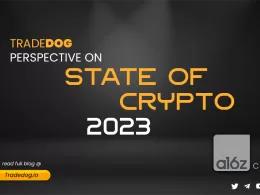Quick Links
After a breach over the weekend on Sunday 14th of August, stablecoin Acala Dollar (aUSD) lost parity with the US dollar, but its price has since also started to recover after a timely decision by the Acala community. This article will highlight the factors that led to this crash and the community voting that bought back the aUSD value.
What is Acala Network and its stablecoin aUSD?
Acala, popularly known as polkadot’s DeFi powerhouse was established in 2019 as a result of a collaboration between Laminar and Polkawallet. The consortium was established to build the Polkadot ecosystem’s cross-chain financial base. The Acala team is led by co-founders Fuyao Jiang, Ruitao Su, Bette Chen, and Bryan Chen.
The decentralized finance (DeFi) network and liquidity center for Polkadot comprise the smart contract platform Acala, which is compatible with Ethereum. The infrastructure of Acala consists of a platform for liquidity staking and a stablecoin network.
The stablecoin network of Acala serves as the foundation for Polkadot’s decentralized finance (DeFi) system. Users can send value across the blockchains that Polkadot connects, known as parachains, by using the cross-chain protocol, which makes use of the relay chain, a shared security layer.
The Acala Dollar Stablecoin aUSD is a multi-collateralized cryptocurrency offered by Acala. This cryptocurrency has a 1:1 peg to the US dollar.
AUSD is totally decentralised in contrast to other stablecoins. Blockchain assets connected to the Polkadot network can be used to generate the aUSD stablecoin. A Collateralized Debt Position (CDP) can be created using any cryptocurrency that is supported by Acala using the Honzon protocol.
How aUSD lost its dollar peg?
The native stablecoin of the Polkadot ecosystem, aUSD, lost parity with the dollar and fell by more than 50% as a result of a serious security compromise at the decentralised hub of the Polkadot network, Acala.
On Sunday, August 14, hackers created 1.28 billion tokens by taking advantage of a flaw in Acala’s recently launched iBTC/AUSD liquidity pool.
The Acala team disabled the transfer functionality of the “erroneously minted aUSD” on the Acala parachain after realising the network had been exploited. Acala team’s intervention was unable to prevent the aUSD from losing the 1:1 peg it has maintained with the U.S. Dollar since its inception in February.
A wallet address that has been linked to the hacker still has over 1.27 billion USD in it. The native token, ACA, and four other tokens were purportedly exchanged for a small portion of the stablecoins by the hacker.
On-chain analysis, however, showed that other persons used the issue to steal DOT worth tens of thousands of dollars from the liquidity pool.
The Acala team’s decision of destroying 1.29 billion aUSD, resulted in the restoration of the dollar peg. The recovery comes amid a new burn scheme that the Acala community voted on August 16th. The proposal aimed to destroy the 1.29 billion aUSD tokens kept in 16 wallets linked to Acala’s recently released iBTC/aUSD liquidity pool smart contract exploit. The burn event helped aUSD regain its dollar peg rapidly. A trace report states that around 99% of the fraudulently issued aUSD that was still on Acala was burnt from exploiters’ wallets. The final 1% were switched or transferred to different parachains. They are still being recovered by the team.
Analyst call
The terra luna crypto,which caused Terra UST to reach its lowest point, served as the official start of the de-peg season. Along with Terra, several other crypto stablecoins had been exposed to depegging by the persistent bear market conditions r. One of the biggest stablecoins by market cap is Tether, which fell from its initial dollar peg in May to a low of $0.95. In addition, the USDD depeg generated a lot of news coverage when its price fluctuated in June.
These attacks have created fear in the minds of investors and have also led to the sweeping of money from the crypto markets. The developers should be most conscious and leave no loopholes for hackers to exploit because in the long term will impact the crypto markets negatively.












